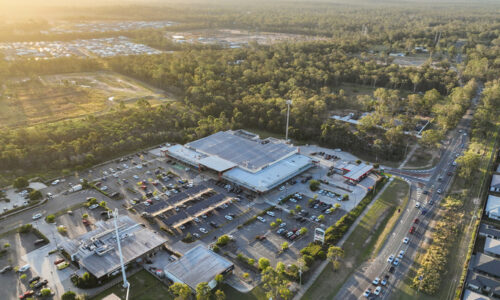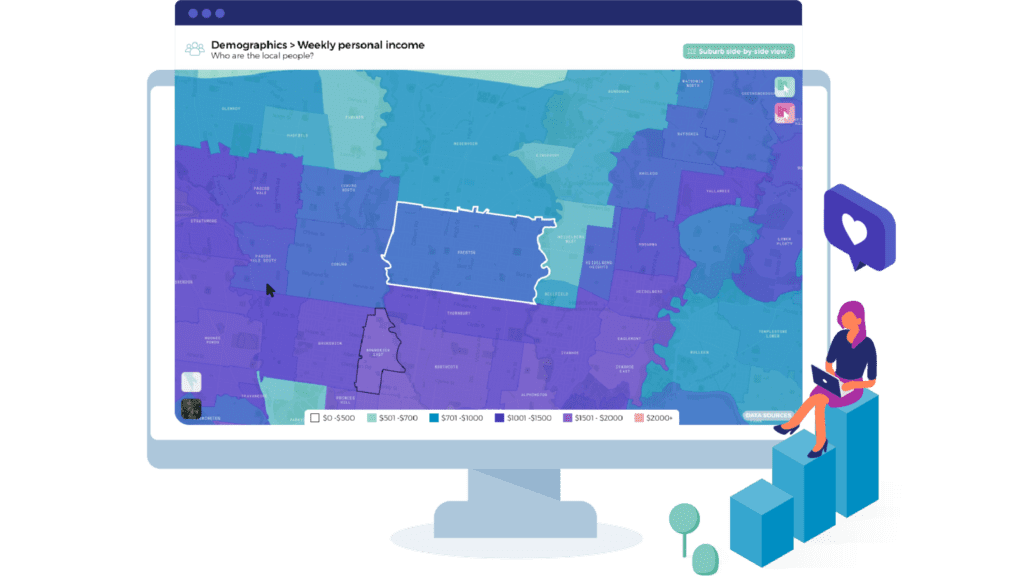A Placemakers Guide to Lifestyle & Behavioural Data
As our cities grow denser, the importance of thoughtful placemaking becomes increasingly evident. Urban spaces are more than just physical locations; they shape our experiences, interactions, and well-being.
Walkable neighbourhoods are healthier, encouraging a more joyful and engaging means of travelling. Access to public transport has been found to make residents five times more physically active than those who rely on cars, while proximity to local spaces like parks can increase the value of properties.
Connecting with nature has been proven to deliver long-term health benefits, with the Japanese practice of ‘forest bathing’ gaining increasing popularity in recent years as an antidote to the intensity of city life.
The beauty of green spaces also has a key role, and The Knight Foundation found that the aesthetics of a neighbourhood can significantly affect our interaction with shared spaces.
As author Alain de Botton shares in his video, beauty is essential to a city’s liveability, directly correlating to residents’ happiness. And a key way to increase beauty? Increase the opportunities for people to interact in public areas.
“Let’s make sure our cities are full of life,” he says. “Full of people doing stuff you can see through the windows.”
Strengthening the connection between people and the places they share, placemaking refers to a collaborative process by which we can shape places to create places people love.
Neighbourhoods are evolving, and lifestyle and behavioural data-driven insights offer valuable guidance in creating inclusive, vibrant, and people-centric environments.
Five ways to use data more effectively in making great places
1. Looking beyond land use to the diversity and offering of physical places
Counting the number of parks and transit stops is important but offers a limited view of the value these assets bring to a neighbourhood.
Neighbourlytics investigates the diversity of types of physical places and how they vary from other places in proximity to them. This enables us to determine how well the physical spaces cater to the broader needs of the whole neighbourhood.
Within the Amenities data set, you can answer questions like:
-
Which outdoor or nature parks draw the most visitors, and which are under utilised?
-
Where do locals prefer to dine, and how do they spend their leisure time?
2. Quality over quantity – Places don’t need to be abundant to be important
One of the data attributes Neighbourlytics considers is how relevant a place is to a neighbourhood. This measure harnesses digital data to understand how long people spend in a place, how popular it is and how they engage with it online.
Parks are often few in number but have the highest relevance scores. A recent survey of innovation districts showed that while public spaces made up only 6% of all areas, they had the highest overall relevance score.
While neighbourhoods tend to have only a small number of green spaces (as compared to housing, local businesses and other facilities), these have high engagement levels.
Within the Neighbourlytics Habits and Top Places data sets, you can explore questions like:
-
What is the importance of outdoor or green space in this community?
-
Are there highly relevant community organisations or groups in this neighbourhood?
-
What lifestyle categories hold the most relevance?
3. Place attachment – people engage with places they love
Active and accessible public spaces help people, even strangers, connect and communicate.
Poorly planned areas can cause different community groups to experience exclusion and social isolation. Placemaking design that utilises lifestyle values, dynamic demographics and stakeholder data can improve health and well-being by encouraging people from all walks of life to interact with each other and their community.
Neighbourlytics measures how people engage with public spaces. After looking at 1000+ neighbourhoods, we’ve noticed some key correlations. When people post about the place itself, it reflects their emotional connection to the site – known as ‘place attachment.‘
For example, people post about the park in the suburb of Parkville, Melbourne 30% of the time. In Collingwood, people post about the suburb and streets 30-40% of the time.
In newer suburbs, the focus of posts tends to be on the home and family life despite the presence of parks, streets and art. Less than 5% of posts are about the suburb or neighbourhood itself.
The Lifestyle Values data set in the Neighbourlyics platform helps to answer questions like:
-
What do people value in this neighbourhood?
-
How do people connect with one another?
-
What types of activities and places do people care about
4. Place Identity
The community that regularly uses the space can provide valuable insights into how the area functions, an understanding of critical issues and can identify what is meaningful to people.
Examining the language visitors use to describe their experience helps us see the neighbourhood through users’ eyes and articulate it’s local reputation.
Topic analysis is created by analysing the keywords used to describe places in the neighbourhood through thousands of reviews and comments. Analysis is undertaken to identify the most distinctive keywords to the neighbourhood.
Distinctive topics are not always the most common, but they are the most unique and, therefore provide insight into the unique character and personality of the lifestyle of a place.
With the Neighbourlytics Lifestyle Values dataset, you can explore questions like:
-
Does this place have a distinct identity?
-
What is the local reputation of the neighbourhood?
-
What defines the overall experience?
5. Social connection
The communities in which we live, and our opportunities to build social connections within them, profoundly affect our well-being and long-term health outcomes. Yet for something so crucial, it can often be neglected, and with loneliness becoming a global epidemic, we as a population are struggling.
How can we know if our cities provide optimal opportunities to foster social connection? As Peter Druker says, “If you can’t measure it, you can’t manage it”. We need direct, persistent measurement of the performance of our cities and communities in supporting the conditions necessary for us to thrive.
Reliant on static, objective data such as demographics, land use and crime rates, our understanding of neighbourhoods remains outside the true experience of residents. Such factors do not take into account real-time human behaviour or subjective perception. While it can show the number of facilities and events on offer, it cannot capture a population’s interaction with them.
Harnessing rich social data to gain insight into a local’s experience. The Neighbourlytics Platform uses geotagged and real-time information to create a holistic understanding of an area.
Leveraging the insights in the platform you can delve into questions related to economic, physical, and community prosperity, such as:
-
How well does the neighbourhood support meaningful work opportunities?
-
How connected are people, both emotionally and physically, to open spaces in our neighbourhoods?
-
How easily can they access the services and activities needed to connect with community life?









